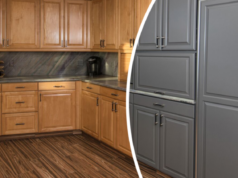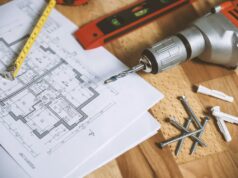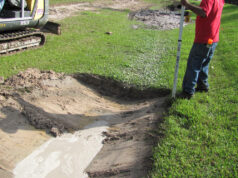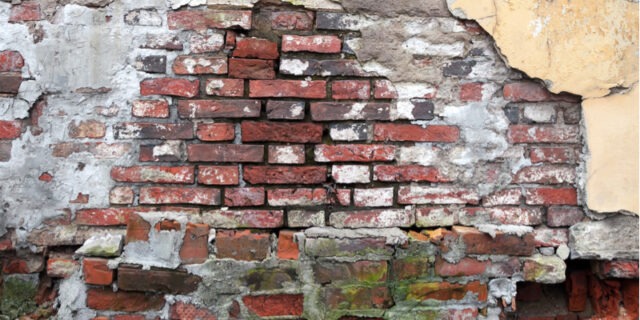
Moisture damage is a challenge many homeowners face. It compromises your home’s aesthetics and can cause structural failure, leading to costly repairs.
While known for their durability, bricks are not entirely invulnerable to moisture damage. Over time, brick houses can develop spalls, efflorescence, and cracks symptomatic of moisture damage.
The good thing is that you can successfully prevent these issues with the right knowledge and strategies. This guide will empower you with practical solutions to protect your brick home from the damaging effects of moisture.
1. Understand moisture damage
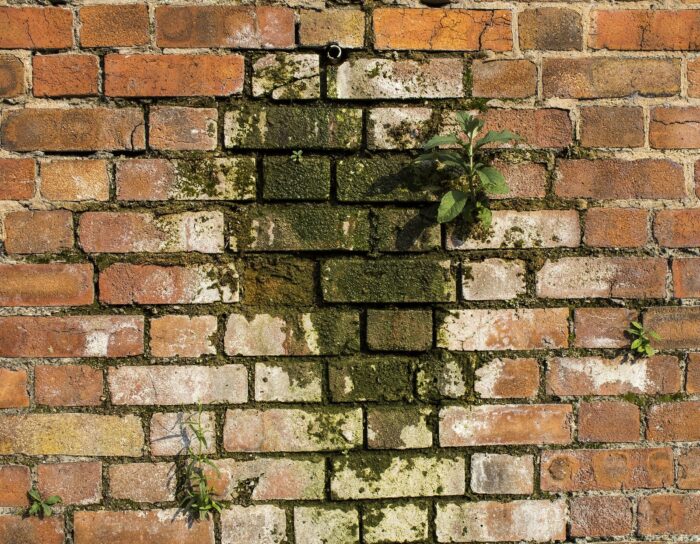
Water can penetrate bricks and mortar due to exposure to rain, poor drainage, and humidity. Over time, the remnant moisture accelerates deterioration.
As the damage progresses, you notice peeling paint, damp patches on walls, and a musty odor. And in some severe cases, efflorescence, or salt deposits, can accumulate on the surface.
Knowing these signs and causes is essential, as you’ll know when to act and what steps to take. Professionals like D’angelo Brick Repair can help you inspect your home thoroughly and unearth such issues.
2. Assess vulnerabilities in your home
It helps to identify high-risk areas in your home. Examine the exterior, checking the brickwork for cracks. Also, check for misalignment or leaks in the gutters and downspouts, as they might redirect water onto the brick surfaces.
Don’t forget the interior. Search for signs of moisture damage, such as mold growth, peeling paint, and damp walls. Be especially keen around the basement and pipes, which are prone to moisture accumulation.
Carry out these inspections regularly, preferably twice a year. They help you identify issues early before extensive damage is done. Being proactive is the key to maintaining a dry brick home.
3. Implement effective water-repellent techniques
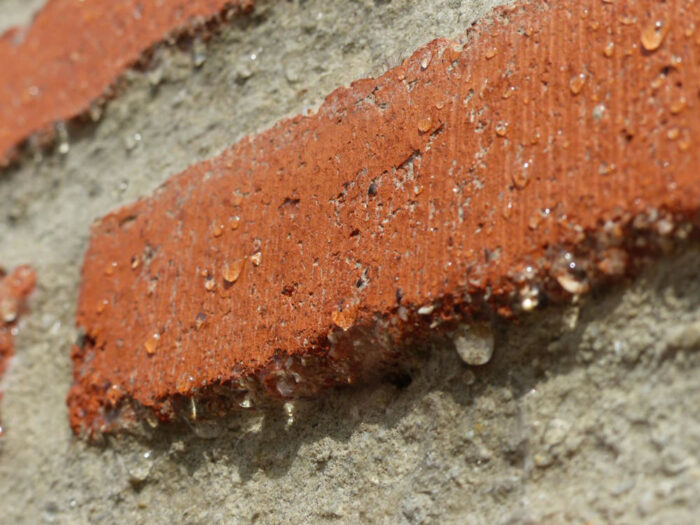
There are several water-repellent techniques you can choose from. First on the list is sealants, which can be silicone or acrylic based. They form a protective layer on brick surfaces by sealing the pores and blocking out moisture. They’re a cost-effective solution and enhance the durability of brick structures.
Next is waterproof coatings. These are primarily composed of elastomeric materials. They provide a sturdy shield against water penetration without compromising breathability. This way, rainwater doesn’t penetrate the brickwork, but internal moisture can escape. Trapped moisture can cause structural issues and mold growth. Thus, the dual action of waterproof coatings helps preserve the brick’s integrity and appearance.
4. Ensure proper drainage systems
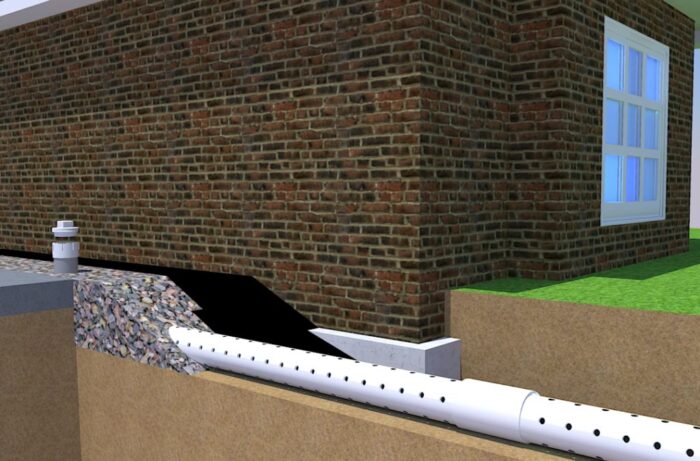
Effective drainage helps prevent moisture damage in brick homes. You must construct proper drainage systems to ensure water flows away from your home’s foundation.
Inspect the gutters and downspouts. Align them properly to direct water away from the house. The grading around your home should also support water flow. The ground should slope away from the house, facilitating drainage of runoff.
Also, ensure the gutters and downspouts are free of debris. Clean them regularly, and if they are outdated or have become less efficient, consider upgrading them. Consider installing a French drain. These comprise trenches filled with gravel and a perforated pipe responsible for directing water away from the house’s foundation. They can last 30 to 40 years, making them a near-permanent drainage solution.
Alternatively, you can install sump pumps to automatically pump out water accumulating in the sump basin. It prevents water from rising and flooding the basement. It’s an especially useful method for areas with heavy rainfall and high water table.
5. Carry out regular maintenance
Regular maintenance is critical in keeping your brick home moisture-free. Create a routine for checkups and upkeep. Two times a year is a good starting point. Conduct thorough inspections, preferably during spring and fall. This way, you can address critical issues before extreme weather.
Below are some maintenance practices to consider:
- Clean the gutters and downspouts to ensure uninhibited water flow.
- Check out seals around doors and windows, and reapply caulking to keep out water.
- Repair cracks in the brickwork to prevent water seepage.
- Enhance ventilation in basements to reduce humidity and moisture buildup. The ideal humidity level should be around 30 to 50%. Anything higher should be of concern.
- Trim plants and trees next to your house to prevent them from retaining moisture against the walls.
- Carry out soil grading around the house to direct water away from the foundation.
Adhering to a regular maintenance schedule significantly reduces the risk of moisture damage.
6. Leverage professional expertise
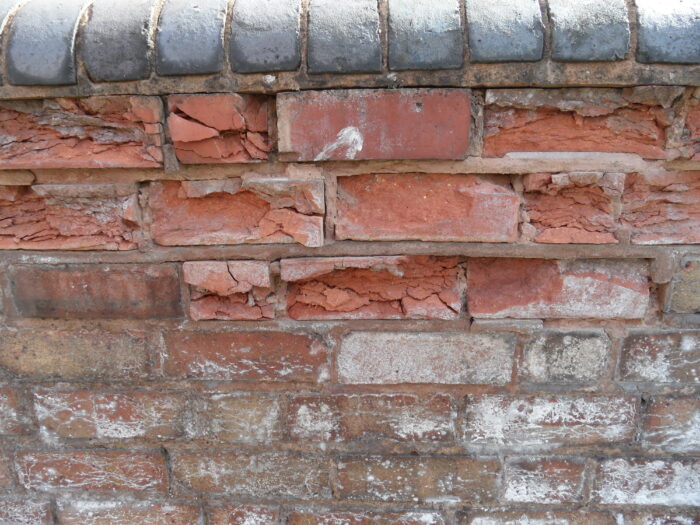
Professional help is critical in preventing moisture damage in brick homes. It helps to know when to call in the experts. If moisture issues in your home become persistent or structural damage occurs, you’d better seek professional help to prevent further damage.
Look for a company with vast experience in moisture-damage prevention and mitigation. Ask for their credentials and read reviews to see if they’re a good fit.
Experts will get to the root of your home’s moisture problem and offer advice on how to arrest the issues permanently. A typical professional home inspection takes only about two to three hours.
Conclusion
Preventing moisture damage in brick homes calls for in-depth knowledge of the typical causes and remedial actions, as discussed above. Moving forward, consider innovative materials and technologies that can offer improved protection against moisture. Also, stay updated with the latest trends in home maintenance. Diligence will help you address the current moisture issues and future-proof your home.



